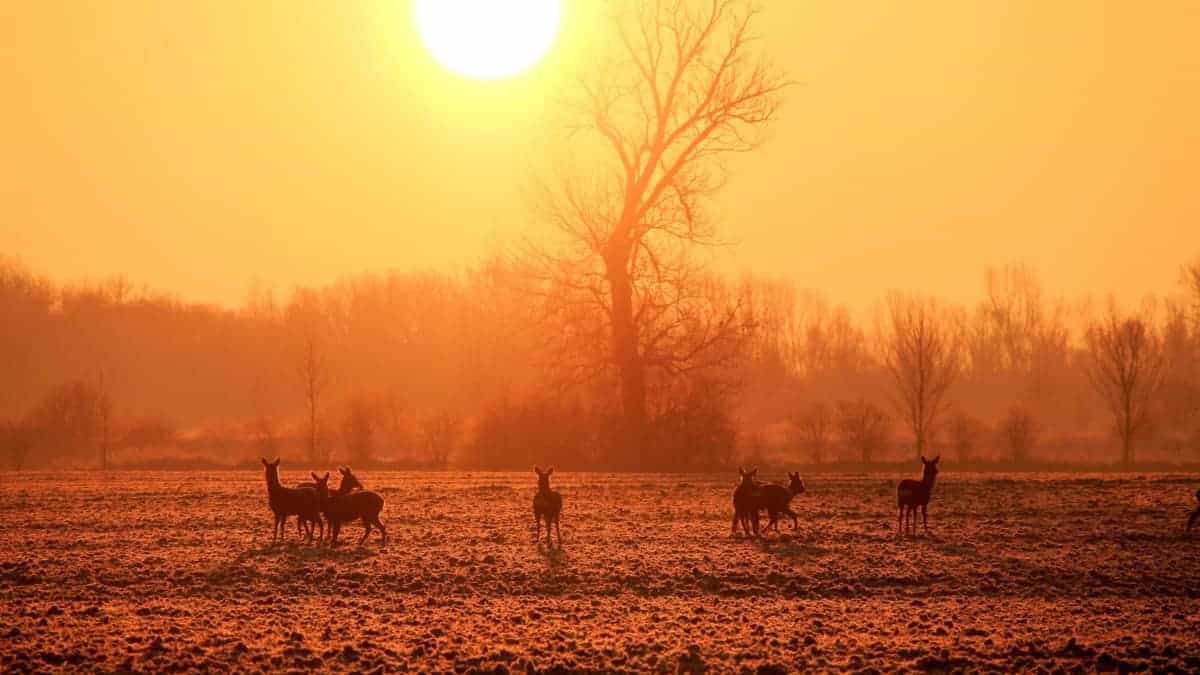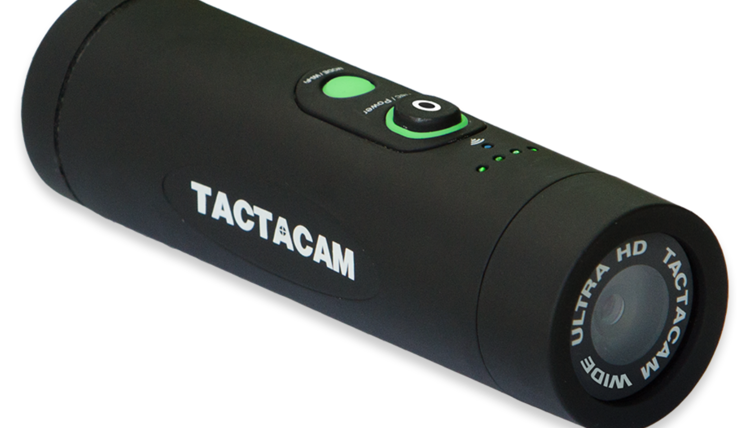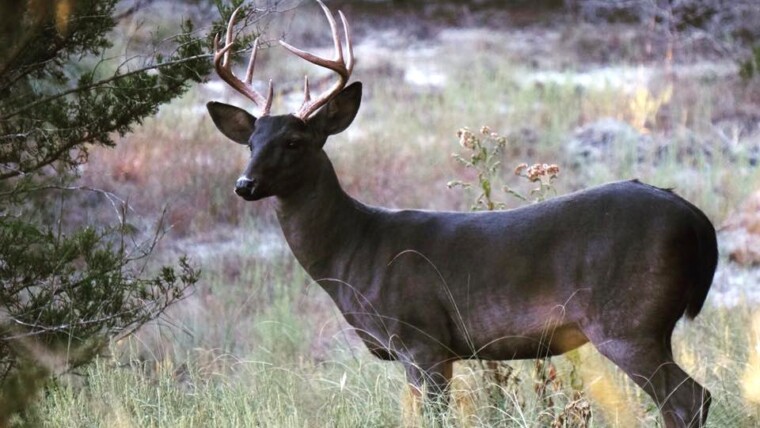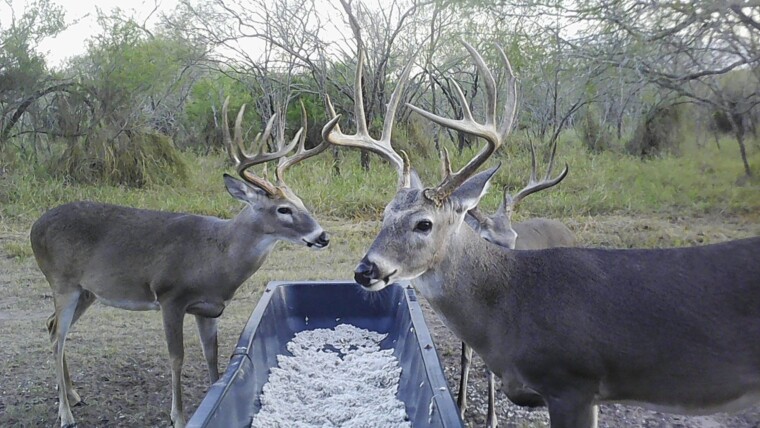The times’ deer are most active is just before sunrise (6:00 AM), and just after sunset (8:00 PM). Times might vary based on location and time of year.
With your region’s sunrise and sunset tables, you should easily be able to find the correct times. For my state of Ohio, the times are published in the hunting laws booklet each year.
Scientific Studies
Studies from PennState college of Agricultural Science shows it depends on seasons. By using tagged Bucks, they collected data over a course of 3 years to determine the time most spent actively traveling or foraging. During hunting season they tend to be less active at their usual times. Almost as if they knew it was “that” time of year. Since deer are sensitive to change in their environment they can, and will, go out of their way to avoid potential danger. Other scientific studies state that their active times vary by seasonal changes like spring, summer, fall, and winter.
Environmental Changes
Deer choose these times to feel more secure in their surroundings. Once foliage starts to die off from season change, they tend to come out into more open areas to feed, as food starts to grow scarce. Usually, this is “Fall” for most northern states. For more southern states like Florida, there really isn’t a fall or a loss of food from vegetation die-off. So thus meaning they need the cover of the slight darkness to help them come out of their secure zones.
Another thing to keep in mind is the habitat. Based on their habitat a deer could change the time it’s more active, and it’s feeding patterns. Moon phases and weather are also known to change a deer’s time schedule. Deer were found to be more active during the day with winds 10MPH or higher, which was weird to most hunters. But at night the deer would only travel if the winds were under 10MPH. These statements were collected over data observed by PSU (as stated above).
Biological changes
Deer keep a strict schedule when not mating. When in rut, young bucks tend to be erratic and not focused on their schedule at all. Doe’s seem to keep to the same schedule. Much like a woman would. Not all deer stay on the same clockwork, some wonder and stray about as they please.
Dawn
Usually around the break of dawn is when the deer are most actively foraging. They stay out finding their meals for about three hours after they start, though some will stay longer depending on the food source and hunger. They know this time is the safest, most predators will be asleep, and human activity at a low. Making it a prime time to graze in the cool dew-covered grass, before the sun shoves its hot waves upon them.
Dusk
Dusk is their chance to cool off from the heat of the day and get their last meal in. Then they return to cover until dawn the next morning. Most deer will stay out two to four hours after dusk, under the dark blanket of the night sky.
What Is The Golden Hour of Deer Hunting?
Simply put, the golden hour of deer hunting is what most hunters refer to when there is one hour of daylight remaining. Deer move frequently during this time to go to their food sources. The golden hour is when you put your cell phone in your pocket so you don’t miss any opportunities. If you’ve been hunting long enough, you’ve looked up from your phone to see a buck standing in front of you. Don’t be that guy or girl during the golden hour.
Specifics On Activity During Mating Season (Rut)
It’s said that Bucks will be more active during the day due to the want to mate. Some hunters and biologists believe this to be true, while others believe it to be false. Thinking without facts, one would assume that a buck would insanely search for a doe, relentlessly even, much like a teenage boy in his prime. You would also have to consider the toll the buck puts himself through with the rivalry from the younger bucks coming into his area wanting his does. This means he might be patrolling his territory borders making sure no foolish youngsters get in.
Lack of knowledge
If you look into this topic a little, you’ll notice the uncertainty from hunters and some biologists. This is because there is little to no data actually backing up the statements made above…
Most are said to be backed by collared tracking over time, etc. Many hunters find this to be highly a myth and say it would take several more years than just a few to back such statements about deer activity at all. It could vary depending on the herd, climate, or even the adaptation to the environment. Deer in a rural environment may move differently than those that live in an urban setting.
The good news is that you can monitor the deer yourself and learn that specific herd’s schedule. With enough persistence and the right environmental factors, you should be able to see for yourself what might be the most active time for deer where you wish to hunt or observe. While I’m hunting, I log every deer that I see into the note portion of my phone along with the time that I saw them. At the end of the day, we only know they come out at dawn and dusk.

For hunting, knowing the exact time deer activity is at its peak, would be the ultimate tool for the job. This part is hardest for all of us…THE WAIT. Either way, you’re going to wind up waiting for the perfectly aged rack to waltz in front of the scope or sight. This is good for a lot of reasons though. One is the thrill of never knowing what will happen next. Will you get the buck of your dreams? Will you wait for hours pointlessly getting nothing, only to wake up and do it again? Will you see some young bucks that aren’t quite mature enough? Never knowing is the best part of the hunt, it’s what brings out the need to do it all over again. Honestly, not having a forward, straight answer on “what time of day are deer most active?” is fascinating! We know a lot about every other animal in the animal kingdom… Yet the magical deer takes its win with mystery. Boy does the animal’s elusive behavior drive us to our wit’s end. Don’t let statistics fool you. At the end of the day, get out there and hunt. The most accurate data for the plot of land that you hunt is with your own two eyes with your butt in a treestand.







